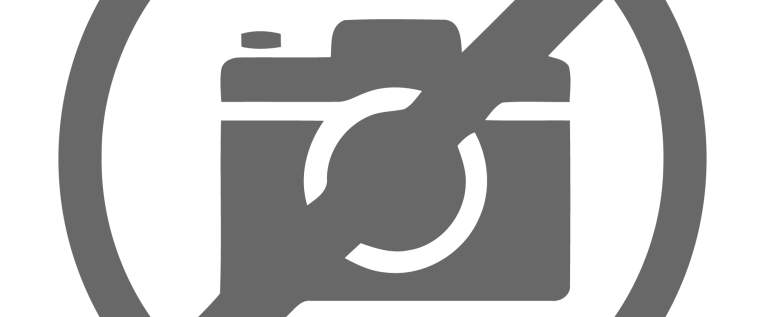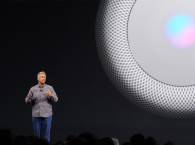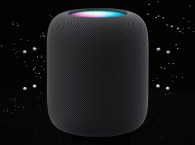
The WWDC 2017 keynote was so full of content that even Tim Cook, Apple CEO, had to dispense with the usual corporate updates meant to guide investors. For a summary, click here or any of the pictures. In quick succession, during more than 3 hours, Apple's executives made all the expected operating system update announcements for all current Apple platforms, revealing several mind-boggling implementations in software/hardware optimizations, graphics acceleration, adoption of new more efficient formats and codecs for video and photography, and updates on all APIs and SDKs. Nothing was forgotten, including strategic announcements on those buzzwords that are currently motivating the industry and the markets, which are Virtual Reality, Augmented Reality, Artificial Intelligence, Machine Learning and, of course, Voice Personal Assistants, an area that Apple pioneered with its Siri platform.
In terms of technologies and platforms, during WWDC17 we learned a few interesting things that might have significant implications on the development of audio products. One of those was the apparent support for NFC tags on Apple's mobile devices, coming with iOS 11 and watchOS 4. By supporting the reading of NFC tags, iOS 11 promises to enable new important applications, especially in retail. Previously Apple restricted the scope of its NFC implementation due to security concerns, which recent updates have addressed. This will allow exciting perspectives in product authentication, direct ordering and delivery, localized product information, and broader cross-platform support.
And while many of the new API updates on audio frameworks contain a wealth of new possibilities for developers and manufacturers, one of the features that caused some excitement is directly related with the Apple File System (APFS) and the availability of file management with cloud support on iOS 11. For the first time, this will enable users of iPhone and iPad to access files that typically previously had to be supported by the operating system and supported directly by the apps. While testing the possibilities on beta versions of the new iOS, some users report the ability to "see" FLAC audio files. This doesn't mean that those FLAC files can actually be played by actual apps yet, but it might be a sign that Apple intends to support the format, eventually.
What was clearly announced and promoted, on the audio front, was the introduction of AirPlay 2. The update of one of the key technologies that enabled Apple to wirelessly stream content among devices (audio, video, device screens, and photos, together with related metadata), will now expand to support multiroom audio over Wi-Fi. Airplay is one of the key technologies that Apple licenses to audio manufacturers to allow compatibility with Apple's devices and is certainly one of the most important components for home entertainment systems and speaker manufacturers.

According to Apple, with the new AirPlay 2, we can now control home audio systems and the speakers throughout the entire house, play a song in the living room and the kitchen at the same time, adjust the volume in any room, or have music start instantly on all speakers - in sync with one another. AirPlay 2 will also enable audio devices to be added as HomeKit accessories.
AirPlay 2 on existing speakers requires a firmware update, obviously, and Apple announced that it is already working with a significant number of partners, including Bose, Devialet, Bang & Olufsen, Denon, Marantz, Bluesound, Polk Audio, Naim, Libratone, and others. Most probably, older hardware will not support the update but AirPlay 2 promises to be an exciting development for many manufacturers. Bose already confirmed it will make AirPlay 2 available for "most" of its current lineup of Wi-Fi enabled speakers, including its SoundTouch lineup.
Among the many announcements, where Apple updated all its hardware and software, was also the expected preview of Apple's new home music speaker with built-in-far-field voice recognition, powered by Apple Siri: the HomePod. Everyone knew Apple was going to announce a voice-connected speaker powered by Siri. So, no surprises there. What is surprising is that it is a very simple proposition that focuses on doing well what it already does - typical Apple. The HomePod design is a powerful combination of electroacoustic mastery, digital processing, and smart connectivity.
Also, more importantly, Apple doesn't try to confuse consumers. It clearly states that far-field Siri control will only be recognized in English language - and that's the reason why the new HomePod will only be launched in the US, UK, and Australia to start. Also, among the many voice-related and natural language recognition technology announcements for Apple's multiple platforms - iOS, macOS, TV OS and watchOS - the company was clear when it stated that, even though they're clearly ahead in this, it will be some time until we get proper multi-language support. Apple is even working on language translation (text and voice) but it is very open about this being early stages and it is focusing on English to Chinese and four other languages. It's not that they are late at this (we all know how macOS featured those technologies from its earliest iterations). Apple is just being honest and not making foolish claims.

When we say that everyone was expecting Apple to announce a speaker, we were obviously referring to the area of voice-controlled speakers, which are effectively also home hubs for connected services and audio automation. As the reputed industry analysts from Futuresource Consulting interestingly published just prior to Apple's WWDC17 event, "Apple is expected to enter the Smart Speaker market with a Siri-controlled HomeKit hub, rumors suggest its key differentiating feature will be superior acoustics (...) as well as the Apple brand, which alone will shift volumes on the most ordinary of devices."
Given that Apple has been solidly paving the way in this segment with its HomeKit (click here to see all recent announcements in regard to HomeKit), that was not a surprise, even though we are certain the Apple HomePod announcement will cause many companies to rethink their strategies and priorities - as usual.
In fact, before the end of that keynote, one could almost hear the screeching noise of companies pulling all the brakes on ongoing projects and preparing to launch its own voice-controlled VeryBigAndOhSoMuchBetter Speaker. Meanwhile, projects that don't feature voice assistant technology have been thrown in the bin and the hunt is on for any startup out there that says it has a voice assistant AI Machine-learning neural engine or anything of the sort.
But the most interesting aspects of the HomePod announcement is in fact the combination of subtle and not-so-subtle revelations regarding Apple's strategy in home audio. The HomePod is a Smart Speaker but it is clearly also a portable wireless speaker for whole-home audio experiences - something that all the leading audio companies know well. Apple is clearly focused on leveraging the concepts that companies such as Sonos and Amazon have explored in part, creating a robust and attractive proposition that effectively consolidates all its existing platforms, devices, and services.
As Futuresource details, the Smart Speaker market has seen dramatic growth. "The category was worth $1.2 billion in 2016 and is on course to achieve $2.5 billion this year. The category took 30% of total home audio units in Q1 in the US, compared with 5% one year earlier, and not even existing the year before that. Considering the audio market is relatively mature and the brands that sell Smart Speakers have never played any part in audio hardware prior to this category, this represents incredible impact."

While a new concept powered by a company such as Apple represents an attractive business opportunity, of particular importance for the audio industry, in general, is also the impact on the consumers' budgets, as Futuresource highlights: "While much of the growth appears to be additive, the category has eaten in to the existing audio market growth. Prior to the category launching in 2015 the audio market was on course to grow 15% in North America in 2016, ultimately it grew 3% (when Smart Speakers are stripped out)."
One of the certain consequences is that Apple will immediately grab an important market share in all the segments that it announced it would enter. As Futuresource analyzes, "History suggests Apple's entry in to the market will lift overall market volumes and revenues, and it will also take shares from incumbents. Apple uniquely can depend on big numbers at launch, and it also enjoys price elasticity meaning it can charge a significant premium and its loyal customer won't flinch. In recent launches of new products, Apple shipped 10 million Watches in its launch-year (2015) and 16 million iPads in its launch-year (2010). In both cases, it immediately became the #1 brand with prices 2 to 3x that of incumbent brands/products. As a point of comparison with those figures - Smart Speakers (almost entirely Amazon Echo) did 1 million in its launch year and 8 million in its second year."







